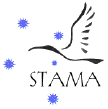


 |
Report from Washington 1995
Report of the International Council on Archives, Provisional Section on University and Research Institution Archives (ICA/SUV) and the Society of American Archivists (SAA) Annual MeetingGavan McCarthy |
Sometime in July, I was invited by Marjorie Barritt of the Bentley Historical Library and Chair of the Steering Committee of the International Council on Archives, Provisional Section on University and Research Institution Archives (ICA/SUV) to speak at the second day of their meeting in Washington DC, 29 August 1995. The ICA/SUV also has under its wing the Science Archives Group which is too small be become a section in its own right, and it was this group, through Joan Warnow-Blewett (remember Recovering Science 1992) of the Center for History of Physics, that was organising the speakers for the second day. Immediately following the ICA meeting was the Society of American Archivists (SAA) 1995 Annual Conference at the Washington Hilton and Towers. This was indeed a unique opportunity to develop solid contacts with the ICA groups and finally meet some of my American colleagues who had been only names at the end of email messages.
I had recently taken over the job of representing the Australian Society of Archivists Special Interest Group on Science, Technology and Medicine Archives on the ICA/SUV Science Archives Group from Colin Smith who had maintained this international link while he was archivist at CSIRO.
The theme for Science Archives Group session was 'How Researchers Communicate in the Electronic Age?'. Joan was moderating the session and she hosted the group at the new completed, luxurious offices of the American Institute of Physics at College Park, Maryland (an outer suburb of Washington DC). The three papers presented were:
It had been the original intention to have the third speaker, the archivist, to comment on the archival implications of the first speakers, a daunting task in any context but in the international arena doubly difficult given the variety of scientific and archival environments represented. The meeting included representatives from Australia, USA, United Kingdom, Ireland, Sweden, Italy, Israel, Brazil, Belgium, Canada and Austria. Thankfully, Joan asked me to talk about the exciting work that ASAP had been doing in the last few years and to raise general issues during the course of the talk.
One of the most important aspects of this get together was to hold two business meetings. Firstly the ICA/SUV had to get itself organised for the ICA meeting in Beijing in 1996 so that it could move beyond its provisional status. By-laws and international understandings of democracy had to be clearly enunciated and agreed upon. This was a fascinating experience for the uninitiated though perhaps a little frustrating for those who have been working at the ICA level for some time.
The second meeting brought together the Science Archives Group to discuss a proposed joint conference with the International Union for the History and Philosophy of Science in Liege, May 1996 to look in more detail at the issues raised by the effect of the electronic age on the practice of science. A number of issues were raised and documented at the lunch meeting in a diner at Dupont Circle and it was decided that the Science Archives Group would push ahead with its involvement in the conference and a committee was appointed to liaise with the IUHPS in the structuring of the conference and the development of the programme.
The committee consists of myself (as key link), Anne Barrett of Imperial College, London and Giovanni Paoloni of the Archivio Centrale dello Stato. At a further lunchtime meeting, the only time we had in the busy schedule set by the SAA meeting, we further refined our ideas and set out a time frame for the development of conference. As Professor Rod Home (Director of ASAP) was already an IUHPS key player in the development of Liege Conference, it naturally fell to me to coordinate the ICA side. Details of the Liege conference will be widely publicised in the near future but it looks like being a major event that could make a significant impact.
The SAA conference is an extraordinary affair characterised by the large number of parallel sessions. It is the conference where you miss the most. I confined myself to the sessions sponsored by the Science, Technology and Healthcare Roundtable of the SAA which means that I missed all the sessions on electronic records. Perhaps the highlight was the presentation at 8.00am on Saturday (a bit tough after a night at a reggae bar on 18th street) from some of the key players involved in the Human Radiation Experiments Records Search, namely Lori Hefner, Lawrence Berkely Laboratory, William LeFurgy and Eleanor Melamed, US Department of Energy and Nancy Pruett, Sandia National Laboratories. For more information on this project see http://www.ohre.doe.gov/.
I had a fantastically stimulating time that was jam-packed with activity. It was great to finally meet Peter Harper of the National Cataloguing Unit for the Archives of Contemporary Scientists, Bath, UK, Steve Wagner, Co-Chair of the SAA Science, Technology and Healthcare Roundtable and Lori Hefner the archivist at the Department of Energy, Lawrence Berkeley Laboratory. Catching up with Joan Warnow-Blewett is always very special and I owe her a big thank you for making my stay so enjoyable. Meeting, for the first time, people like Anne Barrett and Giovanni Paoloni and establishing working relationships with them was particularly exciting but perhaps the key person behind the success of the whole meeting was Marjorie Barritt who had put in so much work to make the ICA meeting a success. The Science Archives Group now has a solid base from which to grow and with the infrastructure available through email and the World Wide Web it is possible to envisage a truly international, cooperative science archives community.
Look for future announcement regarding ICA events and activities.
Cheers,
Gavan

